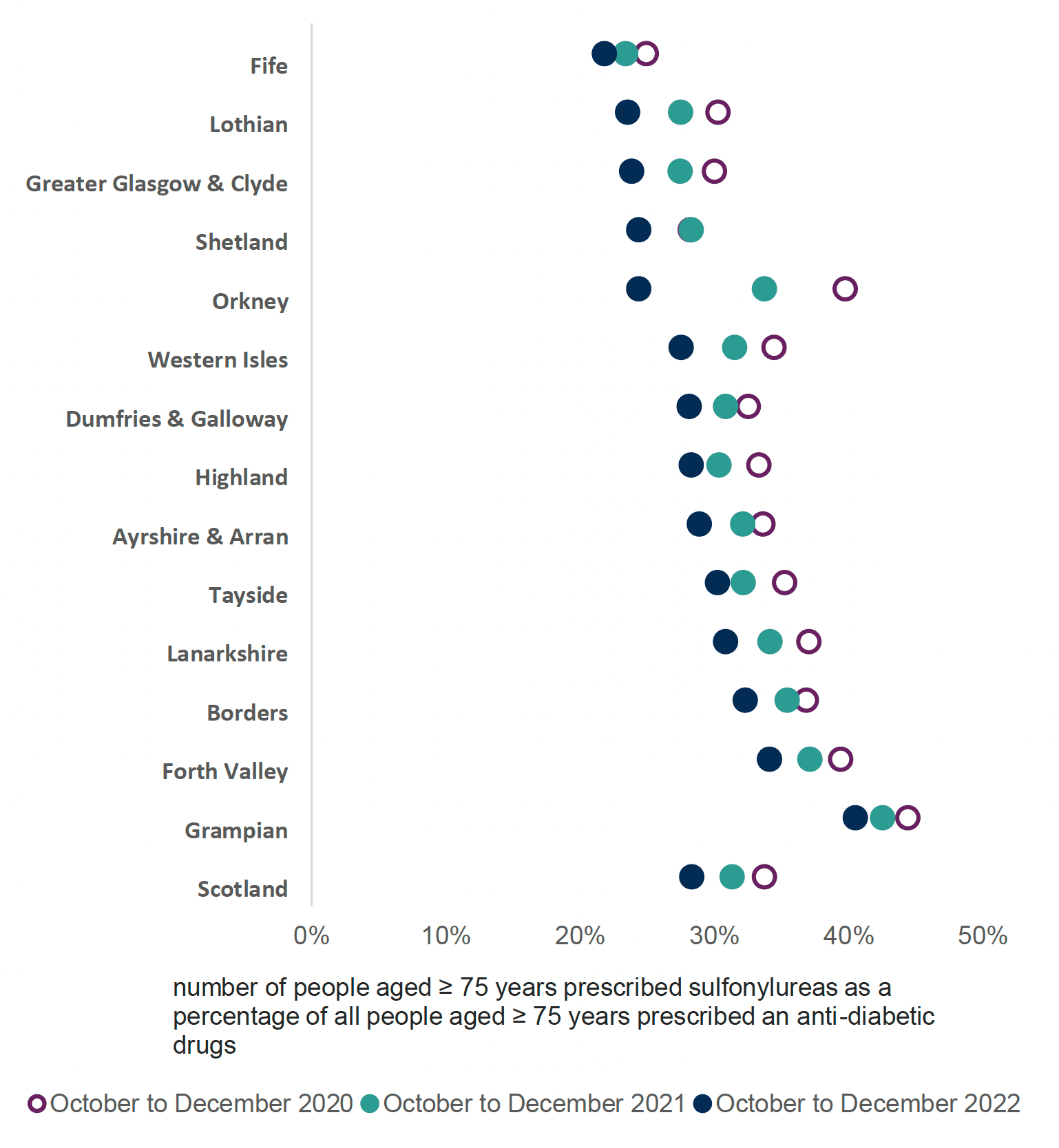Type 2 Diabetes Mellitus - quality prescribing strategy: improvement guide 2024 to 2027
This quality prescribing guide is intended to support clinicians across the multidisciplinary team and people with Type 2 Diabetes Mellitus (T2DM) in shared decision-making and the effective use of medicines, and offers practical advice and options for tailoring care to the needs and preferences of individuals.
9. What are the goals in managing T2DM in frailty and older adults?
The benefits of intensive treatment of T2DM should be balanced against the risk of potential hypoglycaemia and the consequence of falls, fractures and hospitalisation.
A frailty assessment should be a routine component of a diabetes review for all older adults, considering comorbidities, dementia or limited life expectancy.
Benefits of intensive treatment of T2DM:
- Reduce incidence of complications (Polypharmacy Guidance[8]);
- symptomatic hyperglycaemia control (avoidance of polyuria, dehydration, fatigue and renal insufficiency); and
- avoidance of osmotic symptoms and reduced symptomatic hyperglycaemia.
Frailty in the older adult and associated risks:
- accelerated ageing process and muscle loss with frailty[50]
- increased likelihood of hypoglycaemia due to lack of sensory awareness and increased vulnerability to its consequences, including falls, fractures and hospitalisation; and
- comorbidities such as CKD which may require dose adjustment.
A number of international guidelines on the management of diabetes in the older and/or frailer adult have been published, with recommendations based on consensus opinion.[50] This expert working group, together with a review by the polypharmacy short life working group, recommend an assessment of frailty taking a person-centred approach and using the Rockwood Clinical Frailty Scale (CFS)[51] to set individualised glycaemic targets. Any targets set should also take into consideration patient safety and the balance of risk and benefit of intensive treatment. In patients with a higher level of frailty tight blood glucose levels may not be appropriate, and a more appropriate target should be set with the individual. This may result in medicines reduced or stopped where they are causing more harmful side effects than the potential for long-term benefits.
Actions to be considered:
- Timely medication review and deprescribing are key components in the management of people with frailty, depending on level of frailty and HbA1c levels. The 7-Steps approach as described in the Scottish Government Polypharmacy Guidance is recommended
- Treatment goals should be individualised with care planning reflecting the older and/or frailer person’s functional status, comorbidities and life expectancy (see Figure 6 in section 3)
- Review of drug choices in the frail older adult with diabetes should take account of potential side-effects including polydipsia, weight loss and candidiasis in addition to hypoglycaemia risk and declining renal function (Table 8)
- Simplify, switch or de-escalate therapies that may induce hypoglycaemia, such as sulfonylureas (as below) and shorter-acting insulins
- See Table 6 in section 6 for further information on prescribing options
See case study 5.
National Therapeutic Indicator
Number of people aged ≥ 75 years prescribed sulfonylureas as a percentage of all people aged ≥ 75 years prescribed an anti-diabetic drug
There should be a low percentage of those aged 75 years or older prescribed sulfonylureas (SU).
This indicator (Chart 7) continues to show that there are high levels of SU prescribing in those aged 75 years or over. Although this has reduced, current data shows that across Scotland a significant proportion of those aged 75 years or over are still being prescribed an SU, increasing the risk of hypoglycaemia, falls and hospitalisation. Other therapies are available with long term outcome data and lower risk of hypoglycaemia that may be more appropriate.

Contact
Email: EPandT@gov.scot
There is a problem
Thanks for your feedback